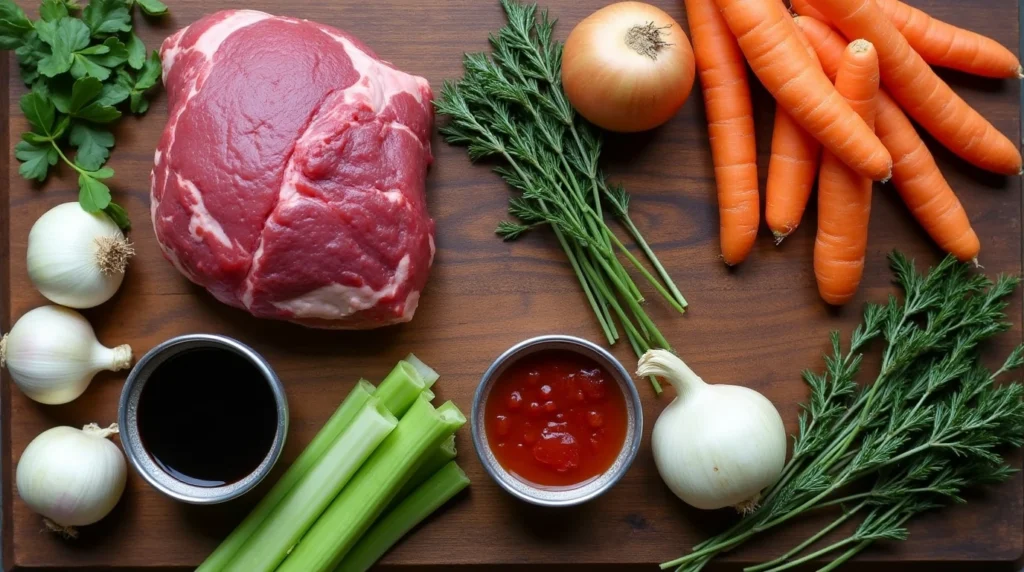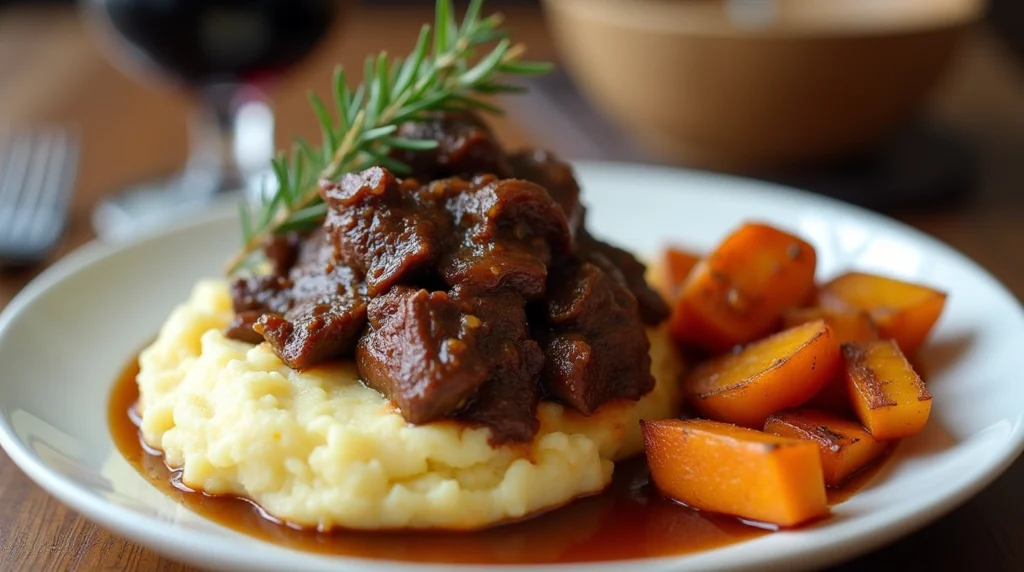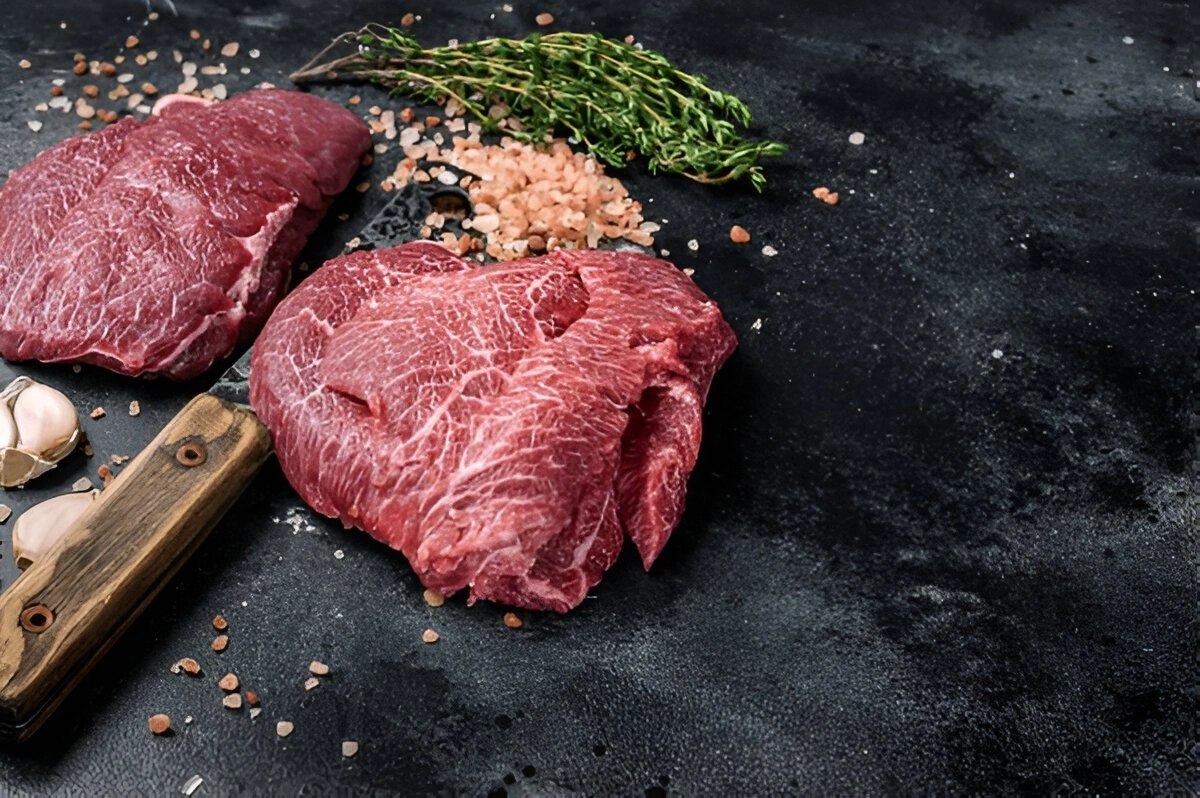When it comes to beef, most home cooks and food enthusiasts gravitate toward familiar cuts like ribeye, brisket, or filet mignon. But for those who love deep, rich flavors and melt-in-your-mouth textures, there’s an unsung hero in the world of beef: beef cheek meat.
Beef cheeks come from the facial muscles of the cow, which work constantly as the animal chews and grazes. This means the meat is tough due to its high collagen content, but with the right cooking techniques, it transforms into an incredibly tender and flavorful delicacy. With a bold beefy taste and a silky texture when slow-cooked, beef cheek meat is a prime candidate for hearty, comforting dishes. It’s also rich in protein, collagen, and essential nutrients, making it a healthy choice for those looking to add more nourishment to their diet.
Table of Contents
Culinary Applications of Beef Cheek Meat
Beef cheek meat’s natural toughness means that slow cooking is the key to unlocking its full potential. This cut is a staple in traditional cuisines worldwide, from the classic French dish boeuf bourguignon to Mexico’s beloved barbacoa. Here are some of the best ways to prepare and enjoy beef cheeks:
1. Braising

Braising is perhaps the most popular method for cooking beef cheeks. The process involves searing the meat to develop a deep, caramelized crust before simmering it slowly in a flavorful liquid. A combination of wine, stock, and aromatic vegetables works beautifully to break down the collagen, resulting in fork-tender meat that’s perfect for serving over mashed potatoes or polenta.
2. Slow-Cooking
For a no-fuss approach, a slow cooker or pressure cooker can transform beef cheeks into a luscious, melt-in-your-mouth masterpiece. Whether in a rich tomato-based sauce or a spicy chili stew, slow cooking allows the meat to reach peak tenderness with minimal effort.
3. Grilling and Smoking
While unconventional, grilling or smoking beef cheeks is an emerging trend. By smoking them low and slow, the meat develops a beautiful bark while retaining its juiciness. A final sear over high heat adds a smoky depth of flavor that pairs well with bold barbecue sauces.
4. Shredded for Tacos and Sandwiches

One of the most delicious ways to use beef cheeks is in tacos, burritos, or sandwiches. Once slow-cooked, the meat can be shredded and stuffed into warm tortillas with fresh toppings or layered onto a crusty roll with pickled onions for a satisfying sandwich.
Ingredients
To prepare a classic braised beef cheek dish, you’ll need:

- 2-3 beef cheeks (about 2 lbs total)
- Salt and black pepper, to taste
- 2 tbsp olive oil
- 1 onion, diced
- 2 carrots, chopped
- 2 celery stalks, chopped
- 4 garlic cloves, minced
- 2 cups red wine (or beef broth as a substitute)
- 2 cups beef broth
- 2 tbsp tomato paste
- 1 tbsp Worcestershire sauce
- 2 sprigs fresh thyme
- 1 sprig fresh rosemary
- 2 bay leaves
- 1 tsp smoked paprika (optional)
- 1 tbsp balsamic vinegar (for added depth)
Preparation and Cooking Techniques
Step 1: Trimming and Cleaning
Beef cheeks often have some excess connective tissue and silver skin that should be trimmed away before cooking. A sharp knife makes quick work of this process, ensuring that only the most tender parts remain.
Step 2: Seasoning and Searing
For maximum flavor, season the cheeks generously with salt, pepper, and aromatics like garlic and thyme. Searing them in a hot pan with a little oil locks in the juices and creates a rich, caramelized crust.
Step 3: Slow Cooking for Tenderness

Once seared, the beef cheeks should be cooked low and slow—whether in a Dutch oven, slow cooker, or pressure cooker. A combination of beef broth, red wine, and tomatoes makes an excellent braising liquid. Cooking times vary:
- Slow cooker: 8 hours on low
- Pressure cooker: 45-60 minutes under high pressure
- Oven braising: 3-4 hours at 300°F (150°C)
Step 4: Resting and Serving
After cooking, let the beef cheeks rest in the sauce for at least 15 minutes before serving. This allows the flavors to meld together beautifully.
Flavor Pairings and Complementary Ingredients
Beef cheek meat shines when paired with robust flavors that enhance its richness. Here are some winning combinations:

Spices and Herbs:
- Bay leaves, rosemary, and thyme for an earthy depth
- Smoked paprika, cumin, and chili powder for a smoky kick
- Cloves, cinnamon, and star anise for a unique aromatic twist
Acidic and Sweet Balances:
- Red wine, balsamic vinegar, or citrus zest to cut through the richness
- Caramelized onions, prunes, or dried apricots to add subtle sweetness
Best Side Dishes:
- Creamy mashed potatoes or polenta to soak up the sauce
- Buttered noodles or risotto for an indulgent pairing
- Roasted root vegetables for a hearty and rustic accompaniment
FAQ
1. Where can I buy beef cheek meat?
You can find beef cheeks at specialty butchers, high-end grocery stores, or online meat suppliers. Some supermarkets may carry them in their butcher section upon request.
2. Why is beef cheek meat so tough before cooking?
Beef cheeks are heavily used muscles, making them dense with connective tissue. However, slow cooking breaks down the collagen, resulting in tender, succulent meat.
3. Can I cook beef cheeks quickly?
Due to their tough nature, beef cheeks require low and slow cooking. Attempting to cook them quickly will leave them chewy and unappetizing.
4. What can I substitute for beef cheeks?
If you can’t find beef cheeks, short ribs, oxtail, or brisket make good substitutes as they have similar collagen-rich compositions.
5. Can I freeze cooked beef cheeks?
Yes! Cooked beef cheeks store well in the freezer for up to 3 months. Just ensure they are stored in an airtight container with some of their cooking liquid to retain moisture.
Conclusion
Beef cheek meat is a hidden gem in the culinary world, offering unparalleled tenderness and flavor when prepared correctly. While it may require patience, the rewards are well worth the effort. Whether you’re braising it in a rich sauce, slow-cooking it for a comforting stew, or shredding it for mouthwatering tacos, this cut is a must-try for any home cook looking to elevate their beef game.
So, next time you’re at the butcher, don’t overlook this incredible cut! Give beef cheeks a chance, and you might just discover your new favorite dish. Have you cooked with beef cheek meat before? Share your experiences and favorite recipes in the comments below!

Beef Cheek Meat Recipe
Ingredients
- 2-3 pieces Beef Cheeks About 2 lbs total
- To taste — Salt & Black Pepper Seasoning
- 2 tbsp Olive Oil For searing
- 1 large Onion Diced
- 2 medium Carrots Chopped
- 2 stalks Celery Chopped
- 4 cloves Garlic Minced
- 2 cups Red Wine Or beef broth substitute
- 2 cups Beef Broth Rich, high-quality broth
- 2 tbsp Tomato Paste Adds depth to sauce
- 1 tbsp Worcestershire Sauce Enhances umami
- 2 sprigs Fresh Thyme Adds herbaceous aroma
- 1 sprig Fresh Rosemary Woody and fragrant
- 2 leaves Bay Leaves Classic braising ingredient
- 1 tsp Smoked Paprika Optional adds smoky flavor
- 1 tbsp Balsamic Vinegar For extra depth
Instructions
1️⃣ Trim and Prep:
- Trim excess connective tissue from the beef cheeks.
- Season generously with salt and black pepper.
2️⃣ Sear the Beef:
- Heat olive oil in a Dutch oven over medium-high heat.
- Sear beef cheeks for 3-4 minutes per side until browned. Remove and set aside.
3️⃣ Sauté Vegetables:
- In the same pot, add onions, carrots, celery, and garlic.
- Sauté for 5 minutes until softened.
4️⃣ Deglaze with Wine:
- Stir in tomato paste and cook for 1 minute.
- Pour in red wine and scrape up browned bits from the bottom.
5️⃣ Braise the Beef:
- Return beef cheeks to the pot.
- Add beef broth, Worcestershire sauce, thyme, rosemary, bay leaves, and smoked paprika.
- Cover and braise at 300°F (150°C) for 3-4 hours until fork-tender.
6️⃣ Rest and Serve:
- Remove beef cheeks and let them rest for 15 minutes.
- Serve with mashed potatoes, polenta, or buttered noodles.
Notes
- Make Ahead: This dish tastes even better the next day! Refrigerate overnight and reheat gently.
- Storage: Store in an airtight container for up to 3 days in the fridge or 3 months in the freezer.
Leave a Reply
There are no reviews yet. Be the first one to write one.

